The automotive landscape is continually evolving, and two models that embody modern design and functionality are the CUPRA Terramar and the SEAT Tarraco. While both are mid-size SUVs from the Volkswagen Group, they each represent distinct styles and philosophies in the realm of performance, technology, and practicality. Here's a detailed comparison of these two impressive vehicles.
CUPRA Terramar vs SEAT Tarraco – Performance, range & efficiency compared
Compare performance, boot capacity, efficiency and price at a glance.
Find out which car is the better choice for you – CUPRA Terramar or SEAT Tarraco?
Design and Dimensions
In terms of exterior design, the CUPRA Terramar showcases a bolder, sportier aesthetic with sharp lines and an aggressive stance, clearly aimed at a younger, performance-oriented audience. Measuring 4,519 mm in length and standing 1,586 mm high, the Terramar has a robust presence on the road.
On the other hand, the SEAT Tarraco adopts a more traditional family SUV design, focusing on elegance combined with function. With a slightly larger footprint, its dimensions are designed for maximum interior space and passenger comfort, appealing to families who prioritize practicality.
Engine Options and Performance
The CUPRA Terramar offers a range of powerful engine options that cater to performance enthusiasts. It features a range of engines including a 2.0-liter petrol engine capable of producing up to 272 HP, as well as hybrid options. The plug-in hybrid model offers an electric range of up to 120 km and delivers a combined efficiency that can achieve as low as 0.4 L/100km—perfect for those looking to reduce their carbon footprint.
In contrast, the SEAT Tarraco, while lacking detailed engine specifications in this comparison, is known to offer a lineup of efficient petrol and diesel engines. Its focus is on providing a balanced performance ideal for daily commuting and family outings. Often, it offers good acceleration and fuel efficiency, although it may not compete directly with the high-performance capabilities of the CUPRA.
Technology and Innovation
In terms of in-car technology, both vehicles are equipped with the latest infotainment systems, yet they differ in user experience. The CUPRA Terramar prides itself on its sport-oriented features and advanced driver-assistance systems, designed to deliver an engaging driving experience. The interior features high-quality materials, an intuitive touchscreen interface, and CUPRA-specific features that emphasize performance.
The SEAT Tarraco, while also offering a sleek infotainment system, focuses more on adaptability and user-friendly interfaces suitable for all family members. With an emphasis on practicality, the Tarraco provides ample storage solutions, a spacious cabin, and a focus on passenger comfort—making it a more family-friendly choice.
Comfort and Space
Comfort is a critical aspect where both models shine, although they cater to different audiences. The CUPRA Terramar provides sporty seats designed for performance driving, but they are also supportive for everyday use. The SUV accommodates five passengers comfortably, with ample legroom and cargo space measuring up to 450 liters.
The SEAT Tarraco offers a more generous trunk capacity of 540 liters, which can be extended thanks to its folding rear seats. It provides a more traditional SUV seating position, which is ideal for family vacations or day-to-day errands.
Conclusion: Choosing the Right SUV
The choice between the CUPRA Terramar and the SEAT Tarraco ultimately comes down to individual preferences and needs. The Terramar is designed for those who seek sporty performance and cutting-edge technology, while the Tarraco appeals to families looking for space, practicality, and comfort. Regardless of the choice, both vehicles represent an exciting blend of style, performance, and advanced engineering—a hallmark of the Volkswagen Group's commitment to quality and innovation.
Here’s where it gets real: The technical differences in detail
Who comes out on top?
Overall, the SEAT Tarraco shows itself to be only a minor advantage and secures the title of DriveDuel Champion.
It convinces with the more balanced overall package and proves to be the more versatile choice for everyday use.
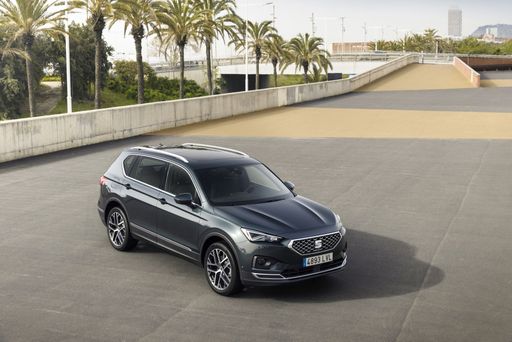 @ SEAT S.A. / SEAT Media Center
@ SEAT S.A. / SEAT Media Center
SEAT Tarraco
CUPRA Terramar
The CUPRA Terramar is a sharply styled, sporty SUV that brings athletic handling and bold design to buyers who want performance with everyday usability. Inside, premium finishes meet driver-focused flair and family-friendly practicality, making it a tempting pick for anyone who wants thrills without turning their daily routine into a chore.
details @ CUPRA / SEAT S.A.
@ CUPRA / SEAT S.A.
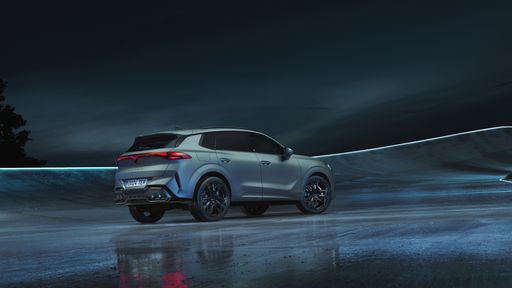 @ CUPRA / SEAT S.A.
@ CUPRA / SEAT S.A.
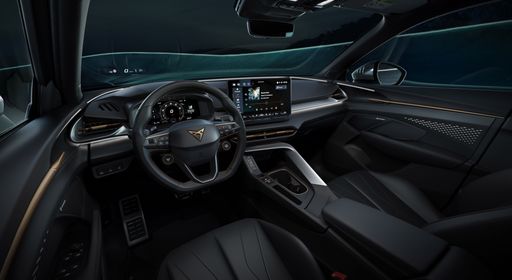 @ CUPRA / SEAT S.A.
@ CUPRA / SEAT S.A.
SEAT Tarraco
The SEAT Tarraco is a versatile family SUV that offers a refined driving experience with a hint of sporty flair. Its spacious interior is designed for comfort and practicality, making it an excellent choice for both city driving and long road trips. The Tarraco's sleek and modern design, coupled with advanced technology features, ensures that it stands out in its class while providing a safe and enjoyable ride.
details @ SEAT S.A. / SEAT Media Center
@ SEAT S.A. / SEAT Media Center
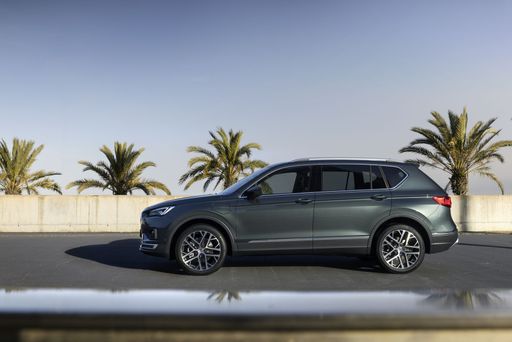 @ SEAT S.A. / SEAT Media Center
@ SEAT S.A. / SEAT Media Center
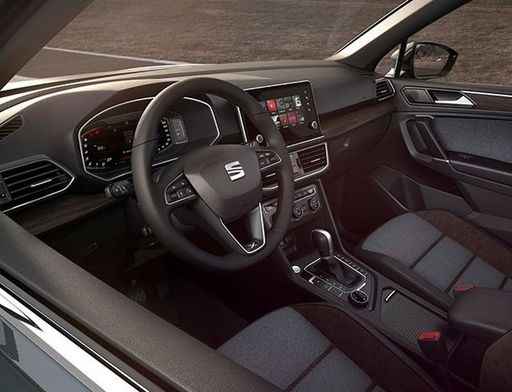 @ SEAT S.A. / SEAT Media Center
@ SEAT S.A. / SEAT Media Center
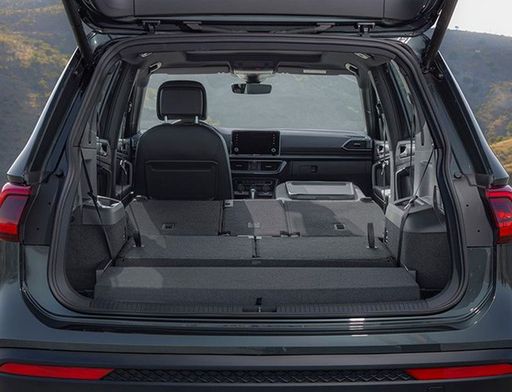 @ SEAT S.A. / SEAT Media Center
@ SEAT S.A. / SEAT Media Center
 @ CUPRA / SEAT S.A.
@ CUPRA / SEAT S.A.
|
 @ SEAT S.A. / SEAT Media Center
@ SEAT S.A. / SEAT Media Center
|
|
|
|
Costs and Consumption |
|
|---|---|
|
Price
36900 - 48500 £
|
Price
-
|
|
Consumption L/100km
6.1 - 8.4 L
|
Consumption L/100km
-
|
|
Consumption kWh/100km
-
|
Consumption kWh/100km
-
|
|
Electric Range
-
|
Electric Range
-
|
|
Battery Capacity
-
|
Battery Capacity
-
|
|
co2
139 - 191 g/km
|
co2
-
|
|
Fuel tank capacity
55 - 60 L
|
Fuel tank capacity
-
|
Dimensions and Body |
|
|---|---|
|
Body Type
SUV
|
Body Type
-
|
|
Seats
5
|
Seats
-
|
|
Doors
5
|
Doors
-
|
|
Curb weight
1638 - 1750 kg
|
Curb weight
-
|
|
Trunk capacity
540 L
|
Trunk capacity
-
|
|
Length
4519 mm
|
Length
-
|
|
Width
1869 mm
|
Width
-
|
|
Height
1586 mm
|
Height
-
|
|
Max trunk capacity
-
|
Max trunk capacity
-
|
|
Payload
540 - 542 kg
|
Payload
-
|
Engine and Performance |
|
|---|---|
|
Engine Type
Petrol MHEV, Petrol
|
Engine Type
-
|
|
Transmission
Automatic
|
Transmission
-
|
|
Transmission Detail
Dual-Clutch Automatic
|
Transmission Detail
-
|
|
Drive Type
Front-Wheel Drive, All-Wheel Drive
|
Drive Type
-
|
|
Power HP
150 - 265 HP
|
Power HP
-
|
|
Acceleration 0-100km/h
5.9 - 9.3 s
|
Acceleration 0-100km/h
-
|
|
Max Speed
205 - 243 km/h
|
Max Speed
-
|
|
Torque
250 - 400 Nm
|
Torque
-
|
|
Number of Cylinders
4
|
Number of Cylinders
-
|
|
Power kW
110 - 195 kW
|
Power kW
-
|
|
Engine capacity
1498 - 1984 cm3
|
Engine capacity
-
|
General |
|
|---|---|
|
Model Year
2024
|
Model Year
-
|
|
CO2 Efficiency Class
E, G, F
|
CO2 Efficiency Class
-
|
|
Brand
CUPRA
|
Brand
-
|
What drivetrain options does the CUPRA Terramar have?
The CUPRA Terramar is available as Front-Wheel Drive or All-Wheel Drive.
The prices and data displayed are estimates based on German list prices and may vary by country. This information is not legally binding.
